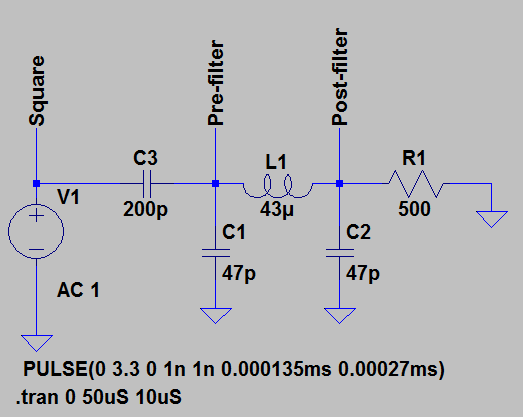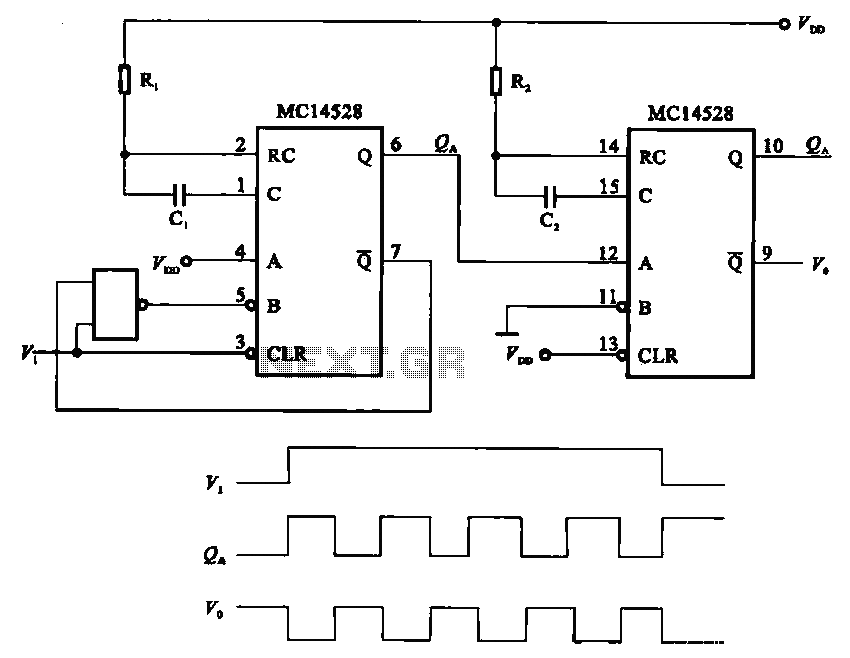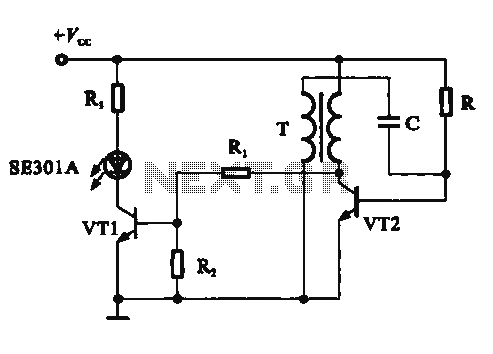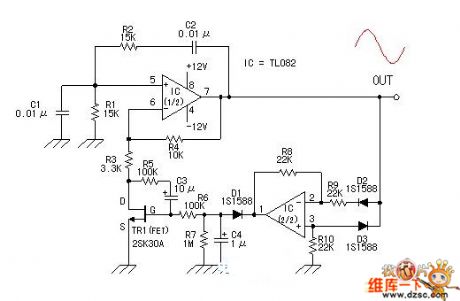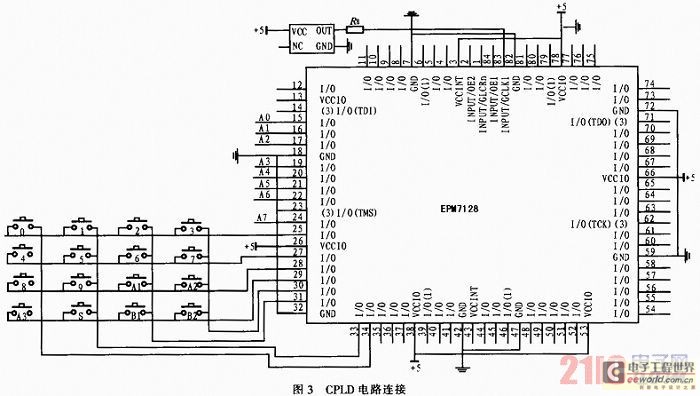
Generating Electro-Gravitic (EG) Forces
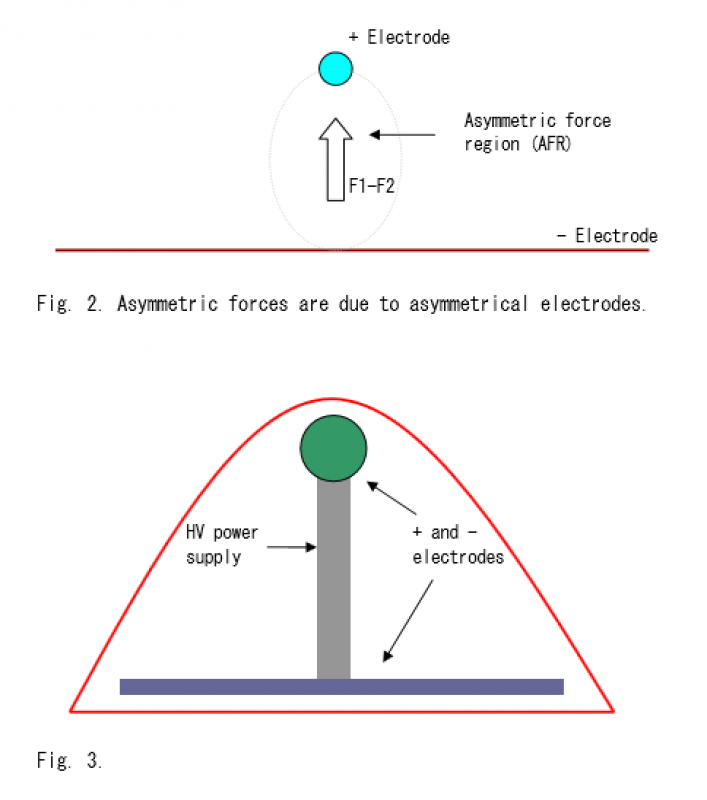
In the absence of any other force, a mass \( m \) experiences a force \( mg \) due to Earth's gravitational field. Since matter is composed of atoms or molecules, it is possible to generate a polarizing electrostatic force between positive and negative matter. These forces will be referred to as \( F_1 \) and \( F_2 \). Biefeld and Brown observed a weight reduction of approximately 1-2%, indicating that \( F_1 \) is slightly greater than \( F_2 \). The objective is to create an asymmetrical force pair by altering the shape of the capacitor. The positive electrode can be configured as a small sphere, while the negative electrode can be a large plate, allowing the negatively charged mass to be distributed over a larger area.
For example, if the structure weighs 10 kg, the required electric field \( E \) is 948 kV/m. To reduce \( E \), the radius \( b \) must be increased. For a radius \( b \) of 10 m, the area \( S \) is calculated as \( S = 2 \pi b = 314.16 \, m^2 \) and \( E \) becomes 189 kV/m. If the structure has a height of 3 m, the potential difference between the positive and negative electrodes must be \( 189 \, kV/m \times 3 \, m = 567 \, kV \).
The described system involves the manipulation of electrostatic forces to achieve a reduction in weight through the use of capacitive elements. The configuration of the electrodes plays a crucial role in the effectiveness of the electrostatic force generation. By designing the positive electrode as a small sphere, the electric field can be concentrated, creating a stronger interaction with the larger, negatively charged plate. This asymmetry in electrode geometry is fundamental to achieving the desired force dynamics.
The calculations provided illustrate the relationship between the mass of the structure, the electric field strength, and the dimensions of the electrodes. The electric field strength \( E \) is inversely proportional to the area of the electrodes; thus, increasing the area of the negative electrode reduces the electric field strength required for a given weight reduction. The potential difference necessary to maintain the electrostatic forces also scales with height, emphasizing the importance of vertical design in the system.
This approach to weight reduction through electrostatic manipulation has implications for various applications, including aerospace engineering and advanced propulsion systems. The principles underlying this electrostatic force generation can lead to innovative designs that leverage gravitational manipulation for enhanced performance and efficiency in various technologies.In the absence of any other force, a mass m experiences a force mg due to Earth’s gravitational field. Since matter is composed of atoms or molecules, it is possible to generate a polarizing electrostatic force between + and – matter.
Let’s refer to these forces as F1 and F2, as shown in Fig. 1. Since Biefeld and Brown observed a weight reduction of about 1-2%, it can be said that F1 is slightly greater than F2.
For example, if the structure weighs 10 kg, the required electric field \( E \) is 948 kV/m. To reduce \( E \), the radius \( b \) must be increased. For a radius \( b \) of 10 m, the area \( S \) is calculated as \( S = 2 \pi b = 314.16 \, m^2 \) and \( E \) becomes 189 kV/m. If the structure has a height of 3 m, the potential difference between the positive and negative electrodes must be \( 189 \, kV/m \times 3 \, m = 567 \, kV \).
The described system involves the manipulation of electrostatic forces to achieve a reduction in weight through the use of capacitive elements. The configuration of the electrodes plays a crucial role in the effectiveness of the electrostatic force generation. By designing the positive electrode as a small sphere, the electric field can be concentrated, creating a stronger interaction with the larger, negatively charged plate. This asymmetry in electrode geometry is fundamental to achieving the desired force dynamics.
The calculations provided illustrate the relationship between the mass of the structure, the electric field strength, and the dimensions of the electrodes. The electric field strength \( E \) is inversely proportional to the area of the electrodes; thus, increasing the area of the negative electrode reduces the electric field strength required for a given weight reduction. The potential difference necessary to maintain the electrostatic forces also scales with height, emphasizing the importance of vertical design in the system.
This approach to weight reduction through electrostatic manipulation has implications for various applications, including aerospace engineering and advanced propulsion systems. The principles underlying this electrostatic force generation can lead to innovative designs that leverage gravitational manipulation for enhanced performance and efficiency in various technologies.In the absence of any other force, a mass m experiences a force mg due to Earth’s gravitational field. Since matter is composed of atoms or molecules, it is possible to generate a polarizing electrostatic force between + and – matter.
Let’s refer to these forces as F1 and F2, as shown in Fig. 1. Since Biefeld and Brown observed a weight reduction of about 1-2%, it can be said that F1 is slightly greater than F2.
So the goal here is to generate an asymmetrical force pair by changing the shape of the capacitor. The + electrode can be made a small sphere and the one can be a large plate. This way, the negatively charged mass is distributed to a larger area.
Example
If the structure weighs 10 Kg, required E is 948KV/m. To reduce E, b has to be increased. For b=10m radius circle, 2 Sb =314.16 m² and E=189KV/m.
If the structure is 3m in height, the potential difference between + and – electrodes must be 189KV/m * 3 = 567 KV.
By 4beowulf7 - [email protected]
